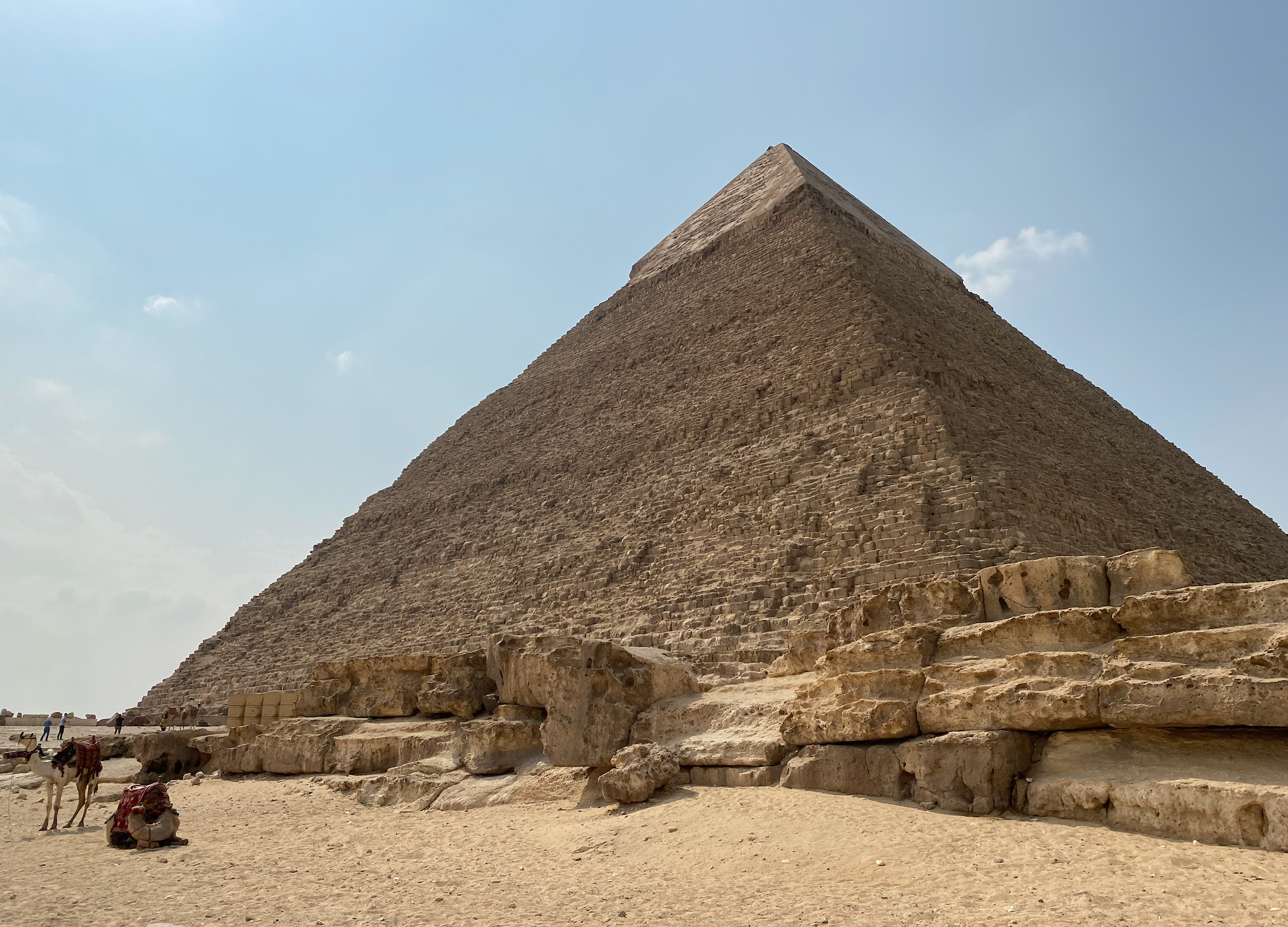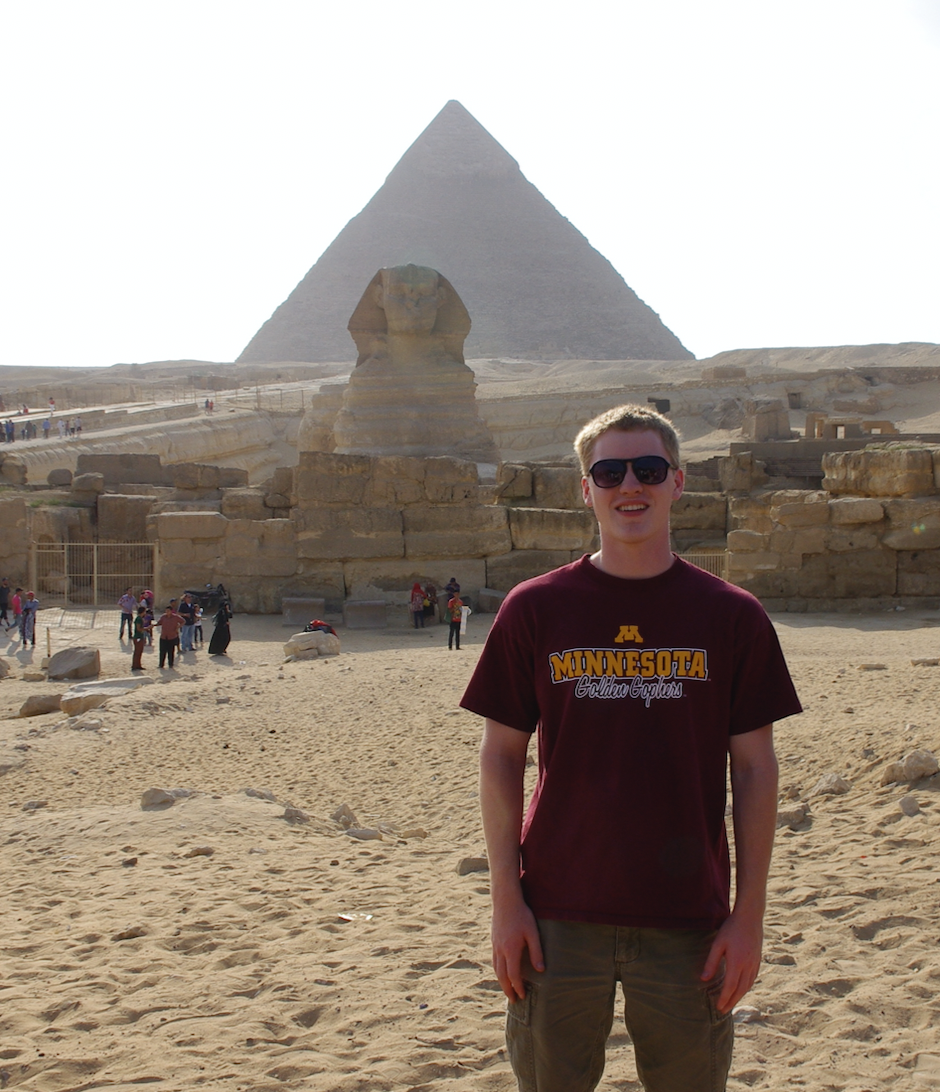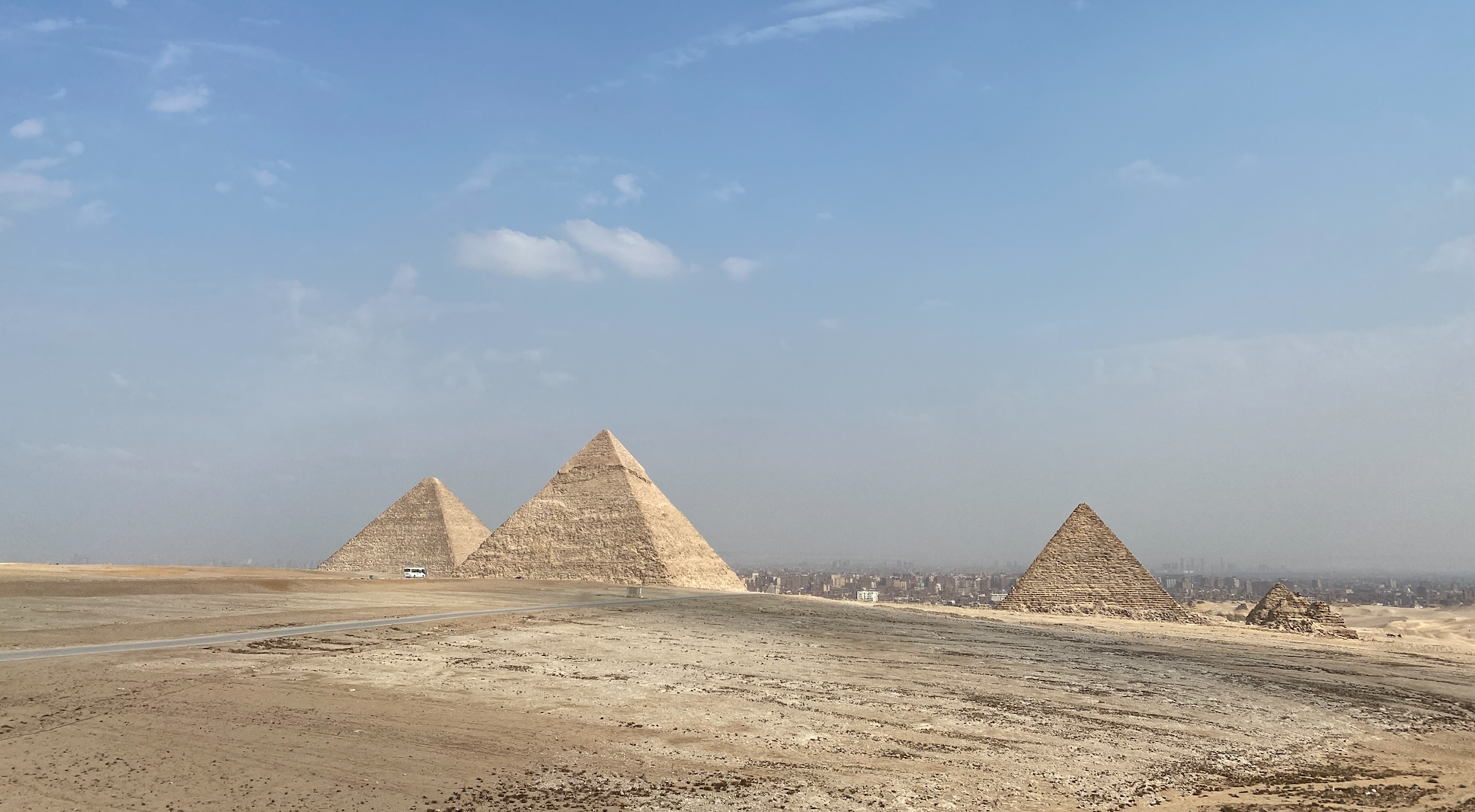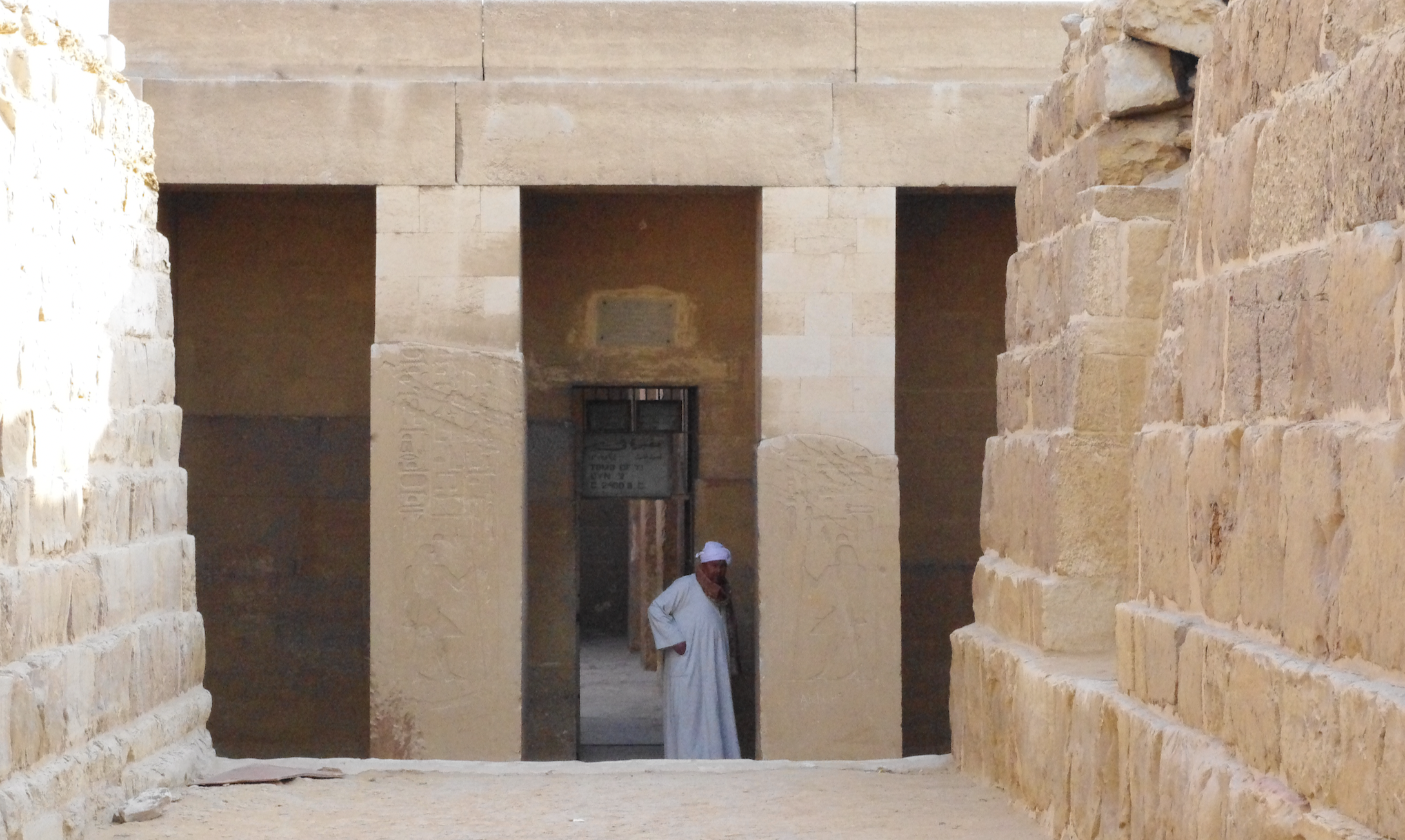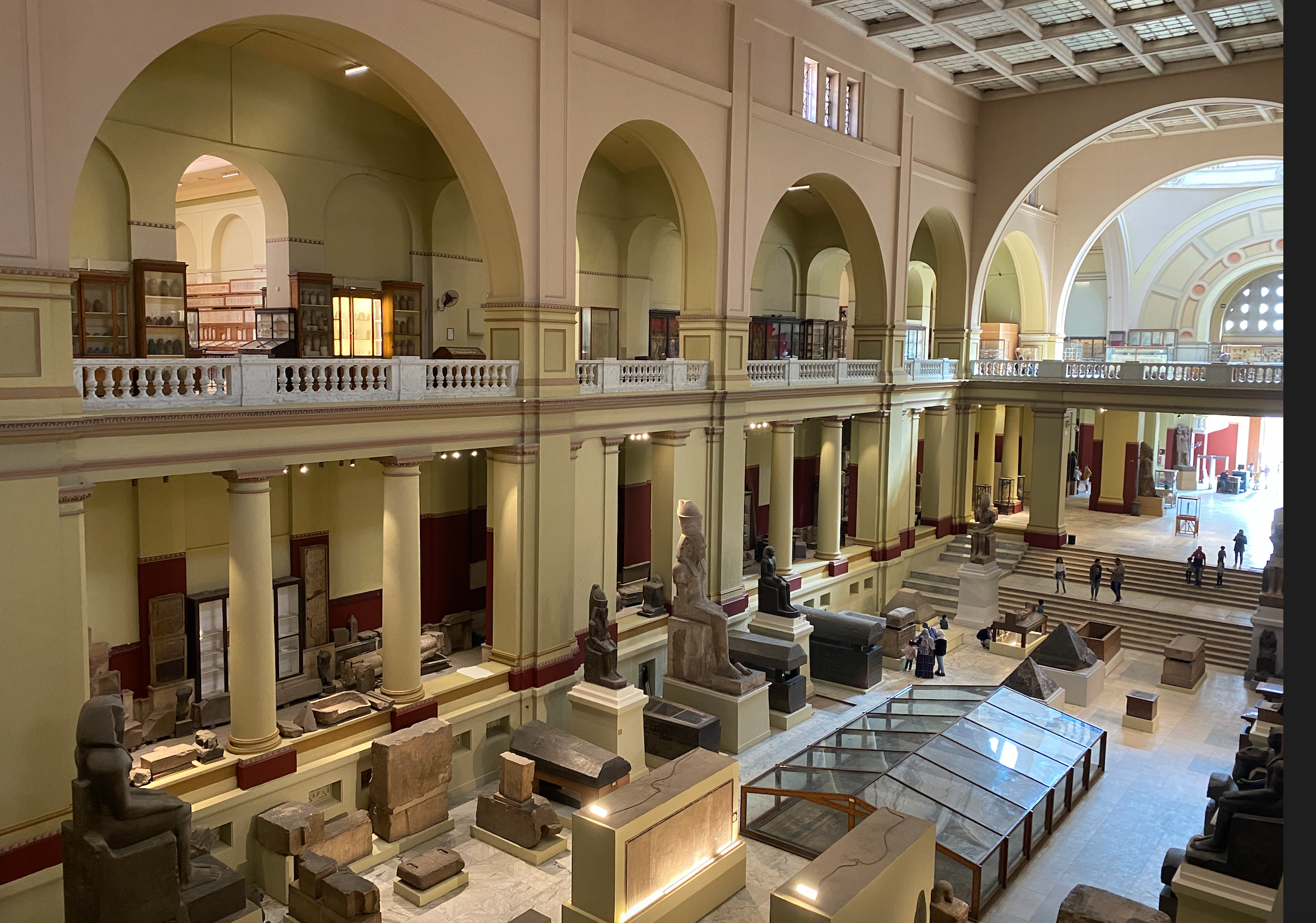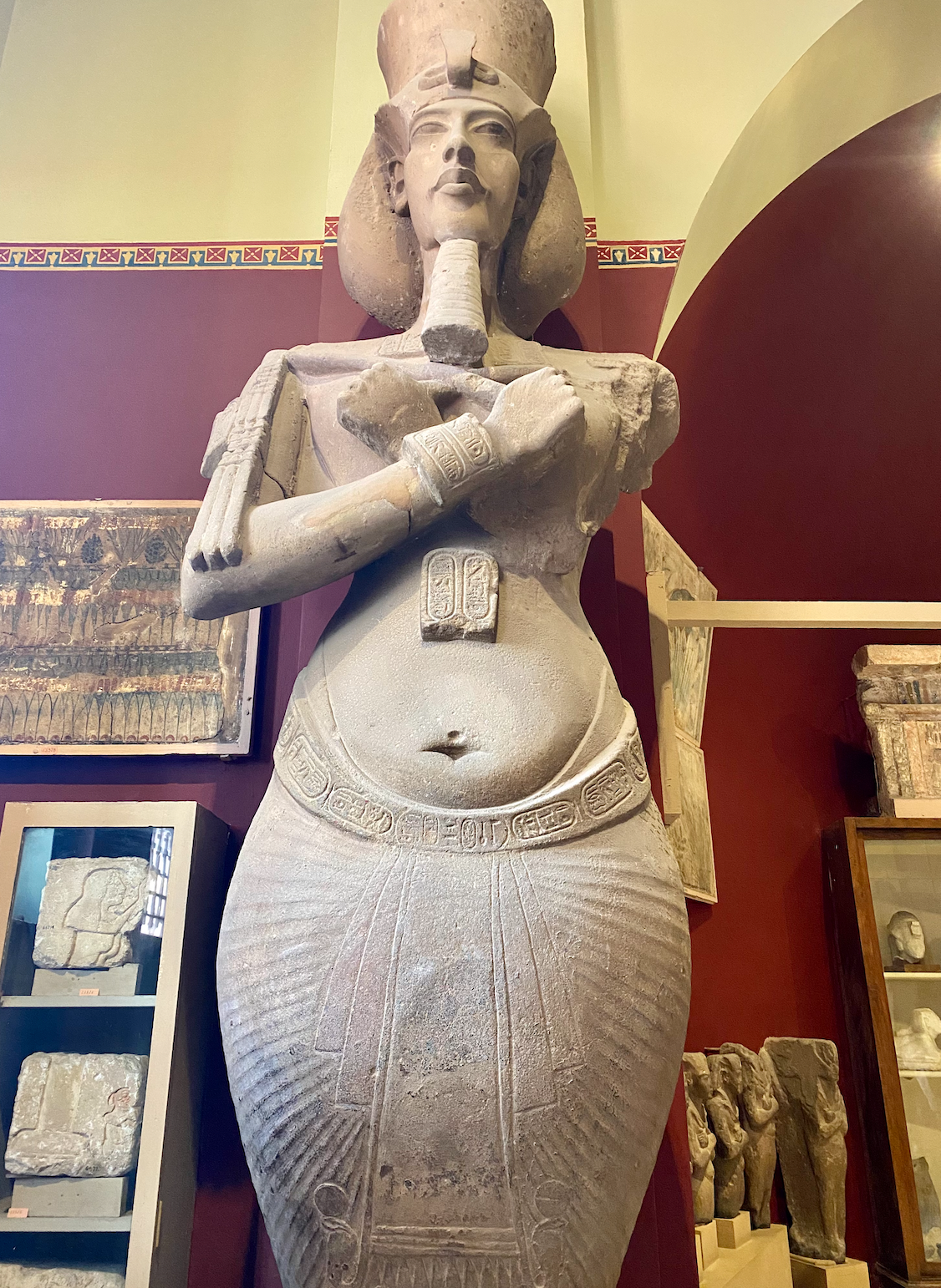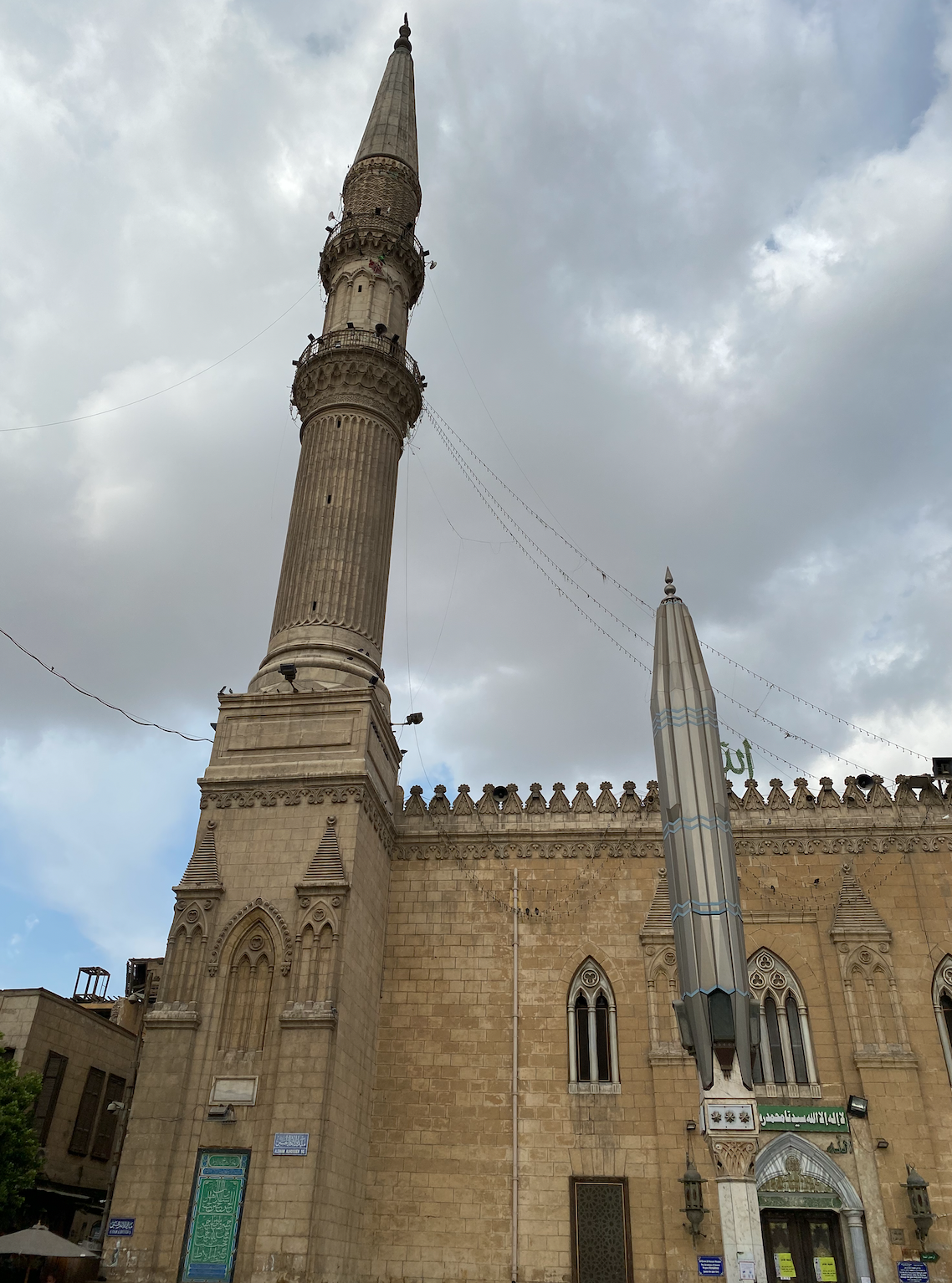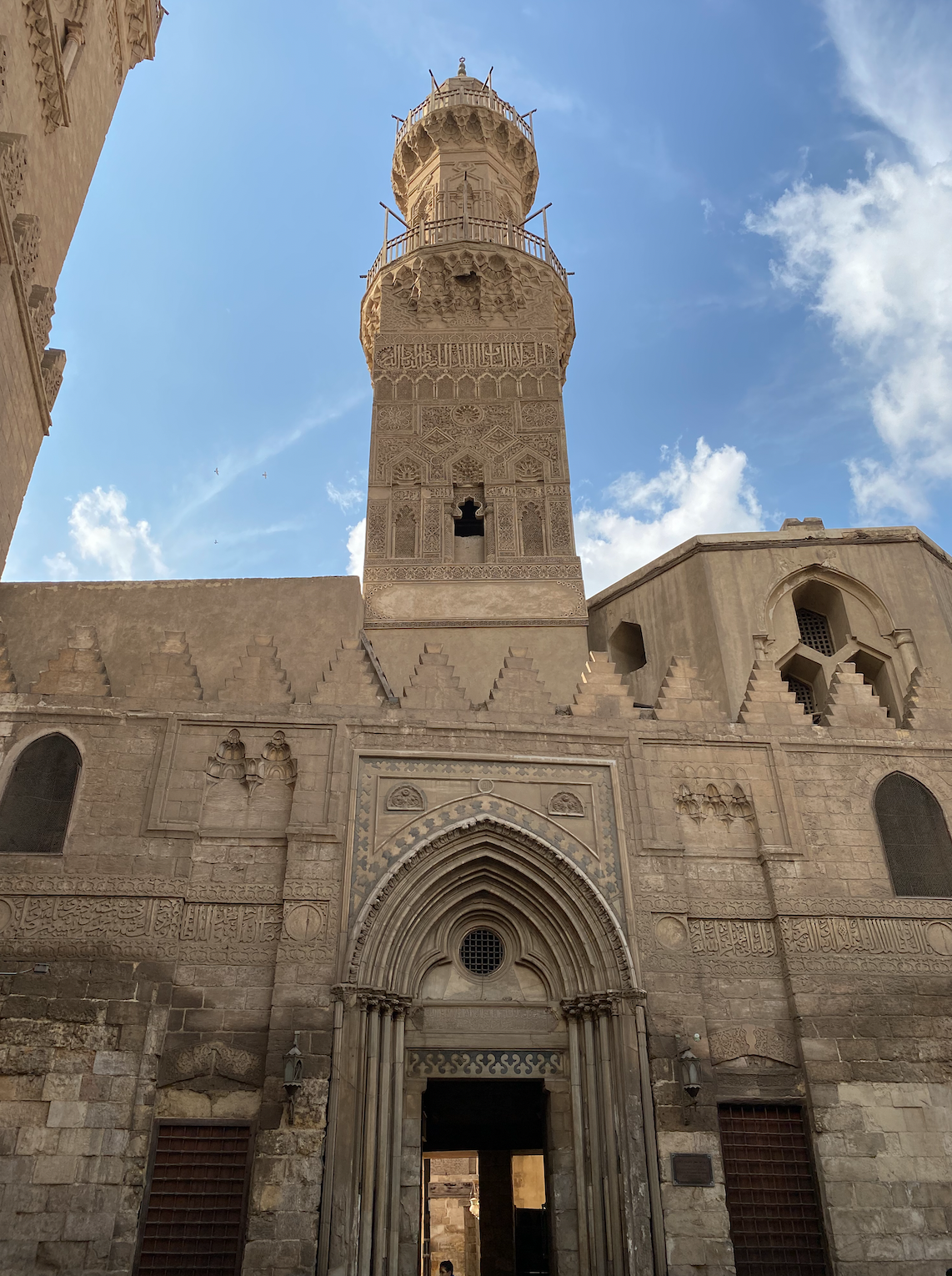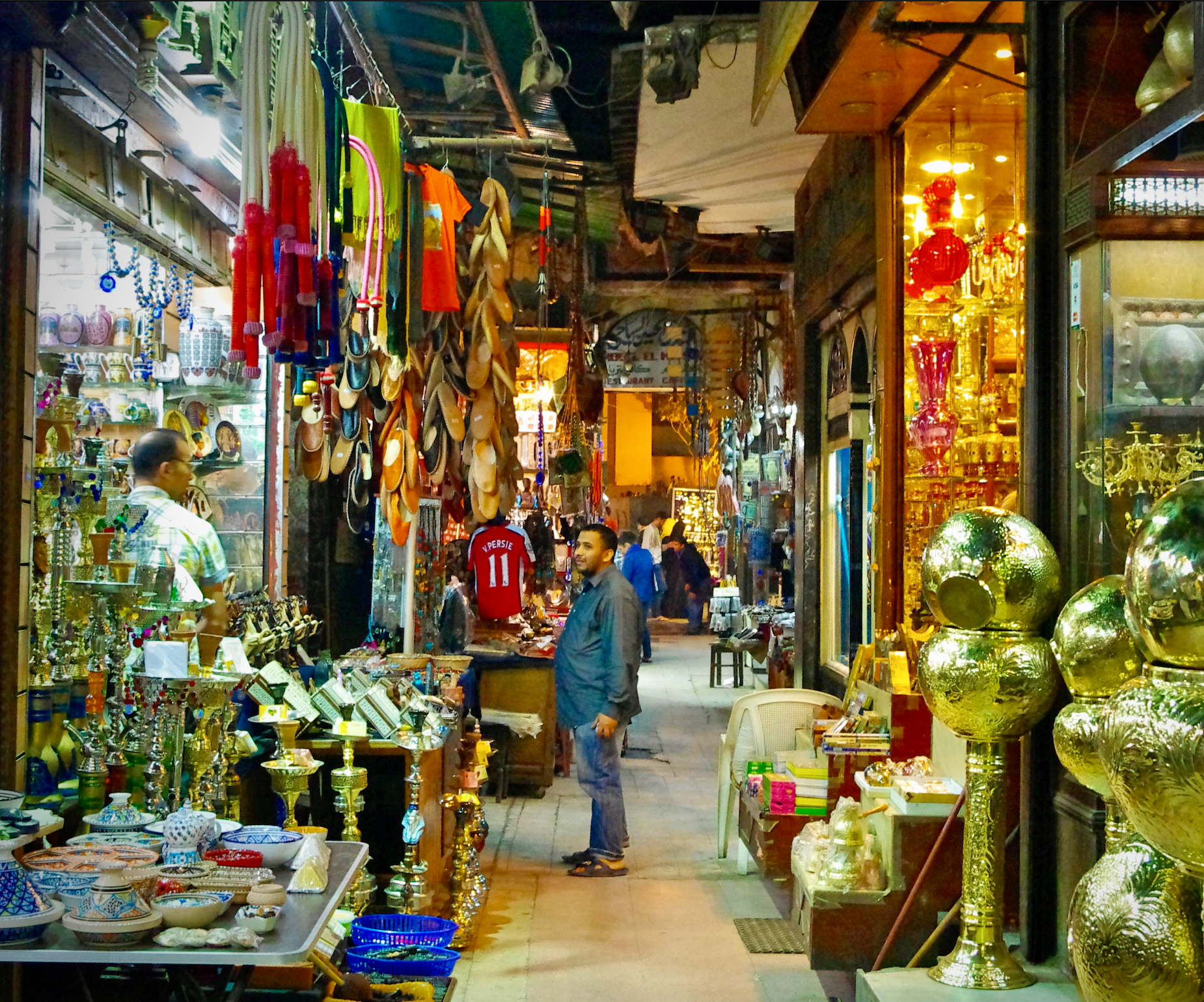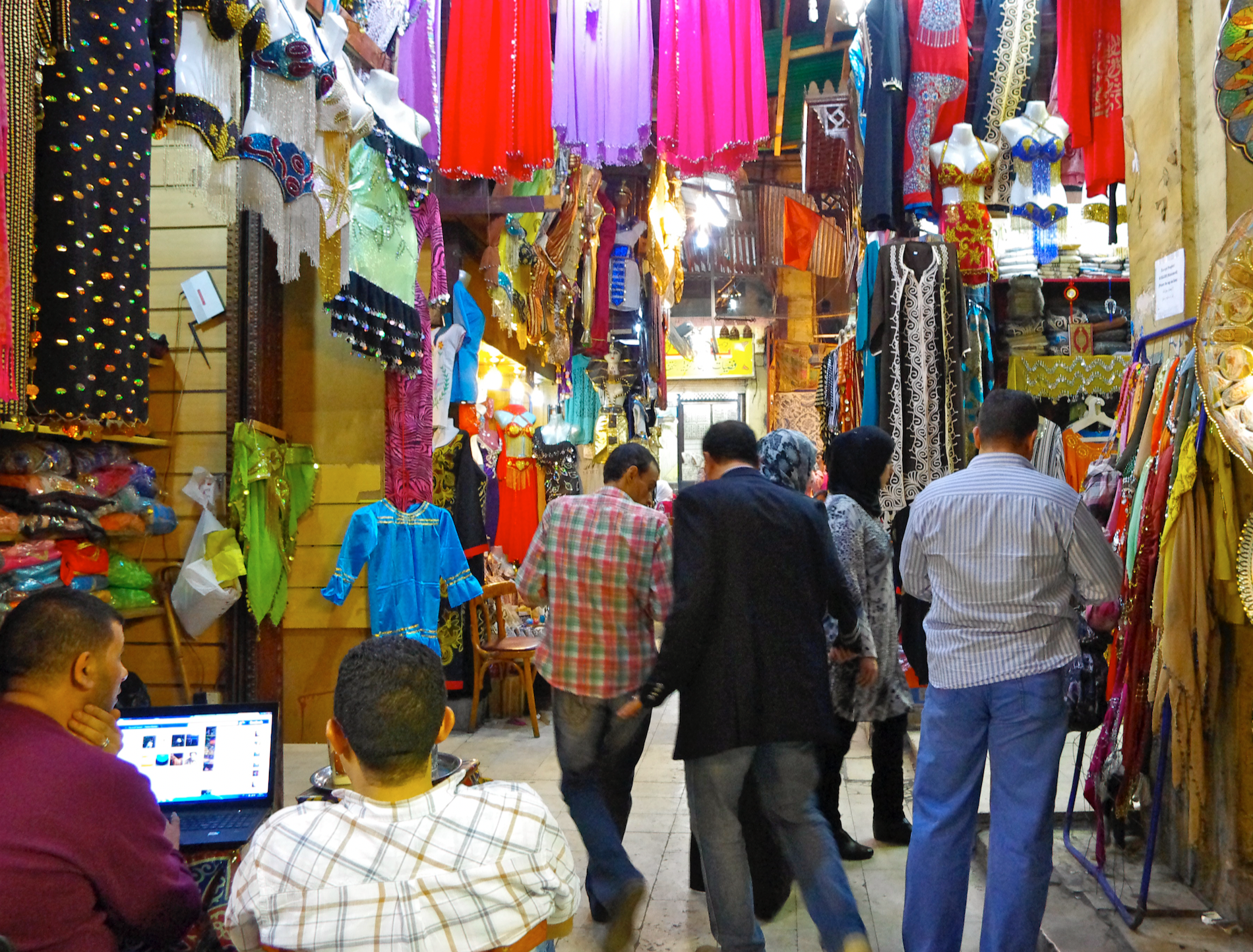The highlights to see in Cairo
Islamic Cairo, especially the area along Moaz Street, is full of gorgeous landmarks from hundreds of years ago
Cairo is a bustling metropolis with over 20 million people, tons to see, eat, and do, and incessant car horn honking.
It is a must-stop on any trip to Egypt, not just for what it offers travelers, but also because it usually is the point of entry and exit. You can try to avoid Cairo, but you will probably find yourself spending at least a few days there at the beginning and end of your Egypt adventure, so why not check out what this amazing city has to offer?
Below are some of the highlights to see while you are in Cairo. This is not an exhaustive list; there is so much in Cairo, it’s best to not try to see everything in one go. It would take three full days in order to see all of these highlights while spending a moderate amount of time at each one.
Pyramids of Giza
The first item on our list is the first image that comes to mind when most people think of Egypt. The Giza Plateau has the only remaining wonder of the ancient world, and the three main pyramids that are there have struck awe in travelers for thousands of years.
Top to bottom: Pyramid of Khafre, the second largest and the only to still have part of its limestone covering intact; the inside chamber at the bottom of Khafre’s Pyramid; the view in front of the Sphinx; the panoramic view where you can see all three Pyramids.
Visiting the pyramids can be done in as little as two hours if you move quickly from spot to spot and have a private car driving you between each stop, or you can extend your time here and do more than just seeing the outside of the three main pyramids and the inside of two (at any given time, only two of three of the pyramids are open to the public--each one requires a separate ticket). Options for extension activities include going to the solar boat museum (highly recommended, and a separate ticket), sipping some tea or having a snack at the 9 Pyramids Lounge (opened in 2020) with a panoramic view, or exploring some of the temple and tomb ruins that are scattered throughout the plateau.
The one thing we do not recommend, however, is riding horses, camels, or donkeys at the Giza Plateau. These animals are often not treated well, and the ride is usually more hassle than it is worth. If you do opt for this activity while at the pyramids, it is imperative to have someone with you who is experienced in Egypt travel who can help negotiate with the handler and make sure they stay true to what price and terms were agreed upon.
Protip: Scams are everywhere in and around the Giza Pyramids complex. Here are the ones we’ve experienced:
Ticket scam: hustlers will wait outside the entry of the pyramids, sometimes as far as several blocks away. If you approach on foot or in a private car, they will try to stop you and insist that the ticket office is in a different area or that the ticket office is closed and you need to buy a ticket in a different location. Ignore them, and continue on to the entrance at the top of the plateau.
Parking scam: if you go with a private car, there is only one parking option you want--the one that is inside the complex. There will be hustlers trying to get you to park in a parking lot that is privately owned. Don’t do this. Just keep driving until you get to the ticket office, buy your tickets, and then have your driver drive through the gate and park inside the complex, right at the base of the Great Pyramid.
“I work for the ministry” scam: often you will be approached by hustlers who flash a badge and say they work for the tourism ministry or some similar organization. They ask to see your ticket and try to guide you around, and waste your time. Ignore anyone who is asking to see your ticket unless they are the guard directly at the entrance to go inside a pyramid or they are a police or military officer in uniform.
Saqqara
Left to right: The Saqqara Step Pyramid; inside the Serapeum burial chamber for the holy Apis bulls; a temple enclosure at Saqqara
Saqqara is the site of the first pyramid built that remains standing--the Step Pyramid of Pharaoh Djoser. This pyramid is not considered a “true” pyramid, since it doesn’t have the iconic pyramid shape--it instead looks like it was made out of building blocks, with one giant block stacked on top of the other, giving it an appearance like a series of steps, hence the name.
This site is a short, 30 minute drive from the Giza Pyramids, so it is usually visited in the same day as the Pyramids. Saqqara has gotten a lot of attention in the past couple of years because archaeologists have made tons of recent discoveries there, including a fully intact tomb and hundreds of gorgeous coffins with mummies still inside. The documentary Secrets of the Saqqara Tomb has been especially popular and has turned a lot of folks on to Saqqara as a destination to explore.
Saqqara’s real draw is not the step pyramid itself, which is often covered in scaffolding and underwhelming after a visit to the Giza Pyramids, but actually the amazing Old Kingdom tombs that are well-preserved and open to the public, and the Serapeum, a fascinating underground complex where the sacred bulls of ancient Egypt were buried in massive granite sarcophagi.
Plan on spending at least two hours in Saqqara, similar to the Giza Plateau, and spend more time if you like to take things more slowly or want to explore a lot on foot.
Protip: You need a guide to efficiently explore Saqqara and make it to all the important sites. Going with Egypt Adventures Travel would cover that department, or make sure you find another reputable guide who knows the area well. The last thing you want to do is wander around the ruins wasting time and missing some of the most important spots, that are usually hard to find.
Egyptian Museum
The Grand Egyptian Museum is not yet open, and probably will not be open until at least the fall of 2021, so the original Egyptian Museum in downtown Cairo still houses the most important collection of ancient Egyptian artifacts in the world, including the full collection of treasures from Tutankhamun’s legendary tomb.
The Egyptian Museum holds thousands of statues, mummies, pieces of jewelry, coffins, stelae (stone with engravings/reliefs), and more. It is as fascinating as it is overwhelming! Try to limit your time here to 1-2 hours maximum, unless you are a very serious student of Egyptology. I prefer to show travelers the most important objects in the museum in terms of historical significance or noteworthiness, and then walk at a relaxed pace through the rest of the galleries, only stopping when someone catches their eye.
Protip: the Egyptian Museum is set up quite haphazardly and a lot of artifacts do not have labels, or have labels that are outdated and do not offer much information about the labelled object. Guildes can really bog you down, so either skip the guide and just wander, or get a guide and explain that you want the brief tour of just the highlights, but that you will stop at any objects you find interesting.
Left to right: exterior of the museum; interior of the museum; Narmer Palette; statue of Akhenaten from the Amarna Gallery
No matter what, my must sees at the Egyptian Museum are:
The Narmer Palette, pictured, (on the first floor, main gallery--just walk straight after entering the museum)
Statues of Hatshepsut as a sphynx and kneeling (after entering, turn left, then right, and follow the flow of the hall)
Amarna gallery, pictured, (at the back of the first floor, the complete opposite end as the entrance)
The Tutankhamun artifacts (a majority of the second floor)
The Tanis cache of silver and jewelry (second floor, just past the Tutankhamun gallery)
The Fayoum portraits (gorgeous Graeco-Roman portraits painted on wood resting on the face of the mummy they depict. Second floor, one of the galleries on the right side of the building as you face away from the entrance)
The Citadel of Salah El-Din
Sitting high atop a plateau and overlooking all of Cairo, the Citadel of Salah El-Din doesn’t just offer a beautiful view: the beautiful mosque of Mohammad Ali is the most beautiful Islamic structure in Egypt (in my opinion). The best part? The CItadel is easy to get to, and it only takes an hour to take in the important spots.
Make sure you take a driver to the Citadel, since it is at the top of a very formidable hill. After your driver drops you off at the entrance, you will walk to the ticket booth, and walk inside the complex, going up some steps and encountering a few twists and turns on your way to the grand mosque at the top. Your driver can wait for you in the parking lot, or if you take an Uber or taxi, it is easy to hail one at the exit once you are finished.
Protip: The Citadel refers to the entire top of the hill, including several religious sites, a military museum, a few cafes, and some gift shops. Despite all there is to do and see in the Citadel, you are here for three things, and should skip anything else:
The Al-Nasser Mohammed Ibn Kalawoun Mosque, pictured, (a much smaller mosque whose entrance you will encounter on your right-hand side on the walk to the larger Muhammad Ali Mosque)
The Muhammad Ali Mosque, pictured, (this gorgeous mosque was built to resemble the Blue Mosque in Istanbul, Turkey)
The gorgeous view. Make sure you take in every opportunity to look at Cairo down below from the different vantage points at the Citadel. Once you exit the Muhammad Ali Mosque, you’ll get the best view of all, with the possibility of seeing the Giza Pyramids in the distance on a clear day
Islamic Cairo and Khan El-Khalilii Bazaar
If you are looking for mosques on mosques on mosques, narrow passageways winding through market stalls and places to sip tea and smoke shisha, and a spot to buy any souvenir-type trinket you could ever want, then visiting Islamic Cairo is a must.
Islamic Cairo is essential to be visited with a guide who knows their way around without getting hassled. The mosques, shops, and restaurants here are rife with scams and other annoyances, so be on your guard and try to focus on all of the amazing sights, smells, and sounds.
You need about two hours to explore this area, and that includes a lot of walking, so be ready! Begin your journey at the Al-Azhar Mosque, the seat of religious authority in Egypt and a gorgeous historic building to boot. Then, cross the busy street using the underground tunnel and emerge near Hussein Mosque, the most beloved mosque in all of Egypt. After this, spend time meandering through the various shops and stalls selling tourist goods, and pick some up if you like made-in-China trinkets and if the price is right. Finish your time by strolling along Moaz Street and taking in the plethora of Islamic architecture including mosques, an ancient hospital, the ancient city’s walls, and more.
Protip: when entering a mosque, you will need to remove your shoes, but you do not need to leave them with the attendant at the door, who will request a tip or donation upon picking your shoes up. Instead, I opt to just carry my shoes by my side in one hand while I am inside of a mosque, so I can easily put them on when it’s time to go, hassle-free.
Coptic Cairo
The Christian answer to Islamic Cairo, Coptic Cairo is a walled-in complex that is full of ancient churches, a museum, Roman ruins, and even a Jewish synagogue. This site is conveniently located directly outside the Cairo Metro stop, “Mar Girgis” (meaning St. George), and is easy to visit on your own, taking only an hour or two total.
Left to right, top to bottom: outside and inside of the Hanging Church; the Roman ruins; inside of the Church of St. Sergius and Bacchus; Mosque of Amr Ibn Al-As
I suggest starting your tour through Coptic Cairo by entering at the Hanging Church, and then seeing the Roman ruins after exiting back outside, followed by the modern (but beautiful) Church of St. George. The Church of St. Sergius and Bacchus, and the Ben Ezra Synagogue are the other must-sees, and then if you are still enraptured with the amazing history of the Copts, check out the wonderful Coptic Museum, also located inside the walled complex.
Protip: Before you hop on the metro back to downtown Cairo, turn to your right with the walls of Coptic Cairo at your back, and walk a few blocks. There you will discover the Mosque of Amr Ibn Al-As (the first mosque built in Egypt) and a wonderful handicrafts market. Both are worth the extra time it takes to see them if you have it to spare.
These highlights are just the beginning of what a traveler can see and do in Cairo.
Stay tuned for future blog posts where we go over lesser-known destinations in Cairo, like Manshiyet Nasr, Darb 1718, El Sawy Culture Wheel, Heliopolis, The Ali Pasha Palace, and more. But for now, if you stick with seeing these sites, you will have a chance to experience a taste of the amazing places Cairo has to offer.
What highlight are you dying to see? Any particular place you would like a whole blog post dedicated to? Let us know in the comments!


